
Gordon Randall Phillip David Garrett was an American science fiction and fantasy author. He was a contributor to Astounding and other science fiction magazines of the 1950s and 1960s. He instructed Robert Silverberg in the techniques of selling large quantities of action-adventure science fiction, and collaborated with him on two novels about men from Earth disrupting a peaceful agrarian civilization on an alien planet.
The Pilgrim Award is presented by the Science Fiction Research Association for Lifetime Achievement in the field of science fiction scholarship. It was created in 1970 and was named after J. O. Bailey’s pioneering book Pilgrims Through Space and Time. Fittingly, the first award was presented to Bailey.

The Encyclopedia of Fantasy is a 1997 reference work concerning fantasy fiction, edited by John Clute and John Grant. Other contributors include Mike Ashley, Neil Gaiman, Diana Wynne Jones, David Langford, Sam J. Lundwall, Michael Scott Rohan, Brian Stableford and Lisa Tuttle.
The Science Fiction Research Association (SFRA), founded in 1970, is the oldest, non-profit professional organization committed to encouraging, facilitating, and rewarding the study of science fiction and fantasy literature, film, and other media. The organization’s international membership includes academically affiliated scholars, librarians, and archivists, as well as authors, editors, publishers, and readers. In addition to its facilitating the exchange of ideas within a network of science fiction and fantasy experts, SFRA holds an annual conference for the critical discussion of science fiction and fantasy where it confers a number of awards, and it produces the quarterly publication, SFRA Review, which features reviews, review essays, articles, interviews, and professional announcements.
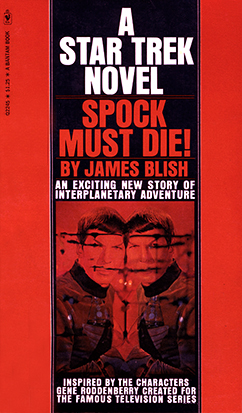
Spock Must Die! is an American science fiction novel written by James Blish, published February 1970 by Bantam Books. It was the first original novel based on the Star Trek television series intended for adult readers. It was preceded by a tie-in comic book line published by Gold Key and the novel Mission to Horatius by Mack Reynolds, all intended for younger readers.

Neptune has appeared in fiction since shortly after its 1846 discovery, albeit infrequently. It initially made appearances indirectly—e.g. through its inhabitants—rather than as a setting. The earliest stories set on Neptune itself portrayed it as a rocky planet rather than as having its actual gaseous composition; later works rectified this error. Extraterrestrial life on Neptune is uncommon in fiction, though the exceptions have ranged from humanoids to gaseous lifeforms. Neptune's largest moon Triton has also appeared in fiction, especially in the late 20th century onwards.

The Cherryh Odyssey is a 2004 collection of essays by various academics, critics and authors about American Hugo Award-winning science fiction and fantasy author, C. J. Cherryh. It was edited by author and academic, Edward Carmien, and was published by Borgo Press, an imprint of Wildside Press as part of its Author Study series. Locus Magazine put the book on its "2004 Recommended Reading List", and Carmien received a nomination for the 2005 Locus Award for Best Non-fiction book for The Cherryh Odyssey.

Blond Barbarians and Noble Savages is a 1975 collection of essays on the fantasy writers Robert E. Howard and H. P. Lovecraft by science-fiction writer L. Sprague de Camp, first published by T-K Graphics. It was reissued in 1986 by Borgo Press as number 2 in its Essays on Fantastic Literature series.
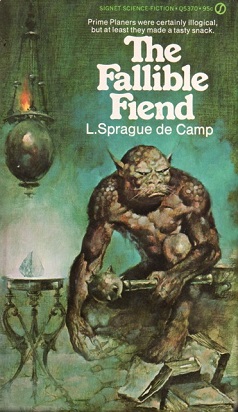
The Fallible Fiend is a fantasy novel by American writer L. Sprague de Camp, the third book of his Novarian series. It was first published as a two-part serial in the magazine Fantastic for December 1972 and February 1973, and subsequently expanded and revised for book publication. The novel was first published in book form as a paperback by Signet Books in 1973; it was later reprinted by Remploy (1974), Sphere (1978), Del Rey/Ballantine (1981), Baen (1992) and the Thorndike Press (2002). The Remploy edition was both the first British and first hardcover edition. An e-book edition was published by Gollancz's SF Gateway imprint on September 29, 2011 as part of a general release of de Camp's works in electronic form. It has also been translated into German and Italian.
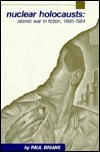
Nuclear Holocausts: Atomic War in Fiction, 1895–1984 was written by Paul Brians and published in 1987. This comprehensive study covers nuclear holocaust fiction published in English-language works between 1895 and 1984. Brians notes that 1895 marked the first appearance of an atomic weapon in fiction: Robert Cromie's Crack of Doom. The latter date marks the conclusion of this study's time span.
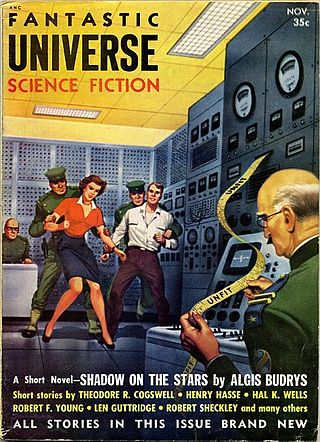
Fantastic Universe was a U.S. science fiction magazine which began publishing in the 1950s. It ran for 69 issues, from June 1953 to March 1960, under two different publishers. It was part of the explosion of science fiction magazine publishing in the 1950s in the United States, and was moderately successful, outlasting almost all of its competitors. The main editors were Leo Margulies (1954–1956) and Hans Stefan Santesson (1956–1960); under Santesson's tenure the quality declined somewhat, and the magazine became known for printing much UFO-related material. A collection of stories from the magazine, edited by Santesson, appeared in 1960 from Prentice-Hall, titled The Fantastic Universe Omnibus.
Science fiction studies is the common name for the academic discipline that studies and researches the history, culture, and works of science fiction and, more broadly, speculative fiction.

Fiona Kelleghan is an American academic and critic specializing in science fiction and fantasy. She was a metadata librarian and a cataloguer at the University of Miami's Otto G. Richter Library. She left the university in 2011.
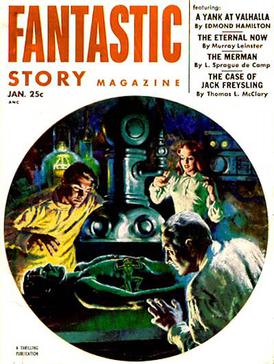
Fantastic Story Quarterlywas a pulp science fiction magazine, published from 1950 to 1955 by Best Books, a subsidiary imprint of Standard Magazines, based in Kokomo, Indiana. The name was changed with the Summer 1951 issue to Fantastic Story Magazine. It was launched to reprint stories from the early years of the science fiction pulp magazines, and was initially intended to carry no new fiction, though in the end every issue contained at least one new story. It was sufficiently successful for Standard to launch Wonder Story Annual as a vehicle for more science fiction reprints, but the success did not last. In 1955 it was merged with Standard's Startling Stories. Original fiction in Fantastic Story included Gordon R. Dickson's first sale, "Trespass", and stories by Walter M. Miller and Richard Matheson.
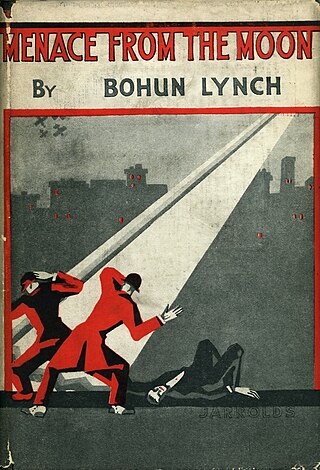
Menace from the Moon is a 1925 science fiction novel by English writer Bohun Lynch, part of an "early twentieth-century flood of lunar fantasies" inaugurated by H. G. Wells' The First Men in the Moon (1901).

The Final Encyclopedia is a science fiction book by Gordon R. Dickson published in 1984. It is part of the Childe Cycle series. The Final Encyclopedia transitions from the militaristic action-adventure of the earlier books in the Childe Cycle to a philosophical commentary on the evolution of humankind.
Anatomy of Wonder — A Critical Guide to Science Fiction is a reference book by Neil Barron, which covers hundreds of works of science fiction.

The Greenwood Encyclopedia of Science Fiction and Fantasy: Themes, Works, and Wonders is an English language reference work on science fiction and fantasy, published in 2005 by Greenwood Press. It was edited by Gary Westfahl and consists of three volumes of 200 entries each. The first two volumes contain entries organized by themes, such as "Aliens in Space", "Asia" or "Rats and Mice", while the third volume lists works such as novels and films which the are considered defining for the science fiction and fantasy genres.

A Honeymoon in Space is a 1901 fix-up novel by George Griffith. The six component stories were originally published in Pearson's Magazine in 1900 under the collective title "Stories of Other Worlds". The scientific romance story depicts a tour of the Solar System.
Science-Fiction: The Gernsback Years is a 1998 reference work covering the history of English-language science fiction magazines from 1926 to 1936, comprising 1,835 individual stories. It was written by E. F. Bleiler with the assistance of his son Richard Bleiler. The book received positive reviews, with critics commending its comprehensiveness and level of detail. Science fiction scholars James E. Gunn and Gary Westfahl both commented that their own previous research would have been greatly aided by the book, had it been available to them.















